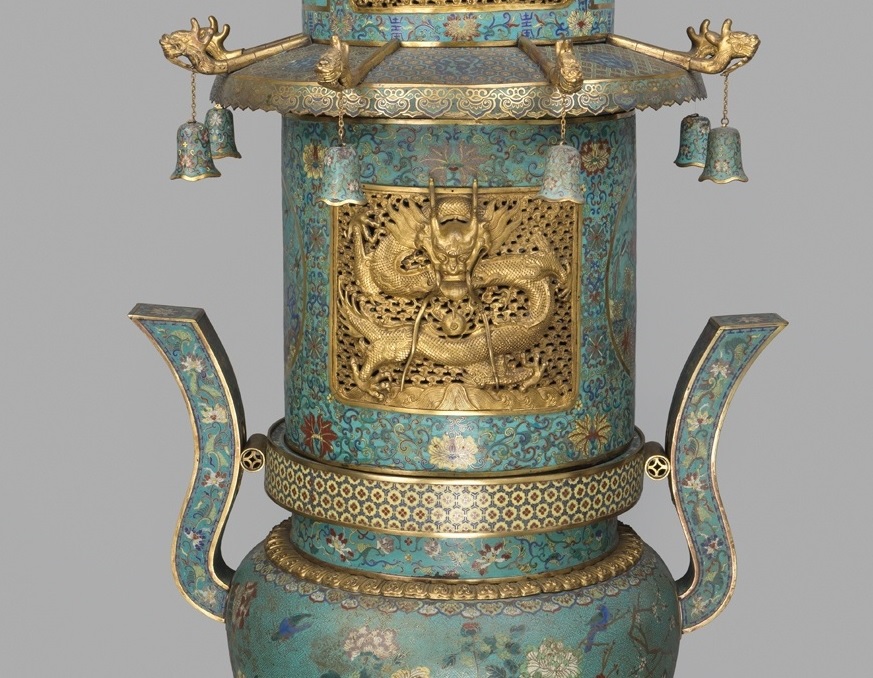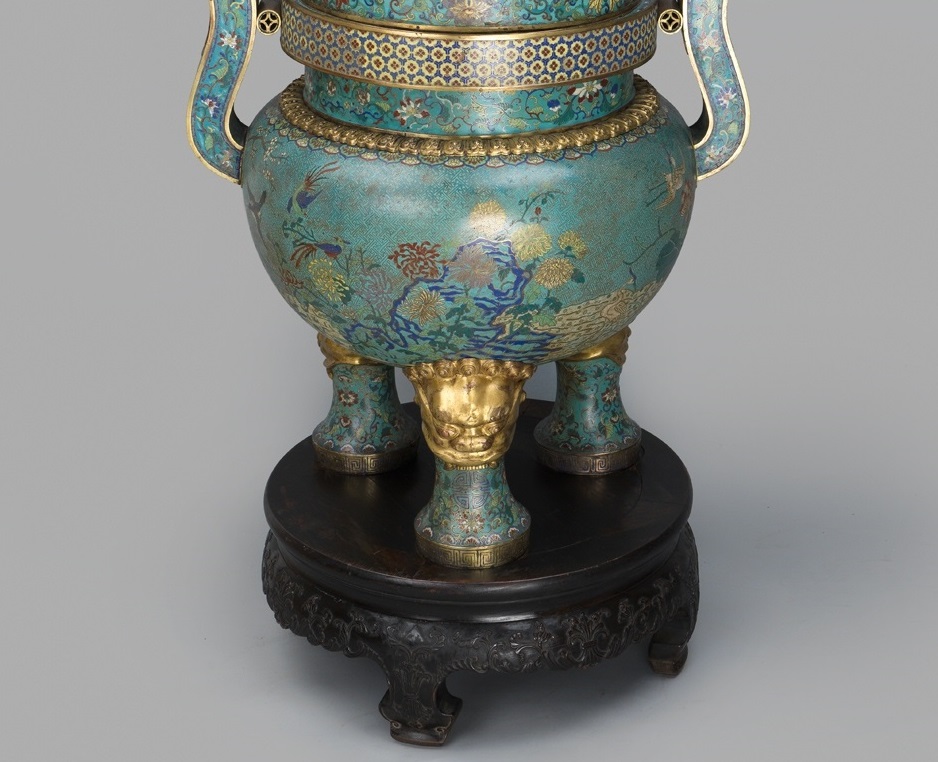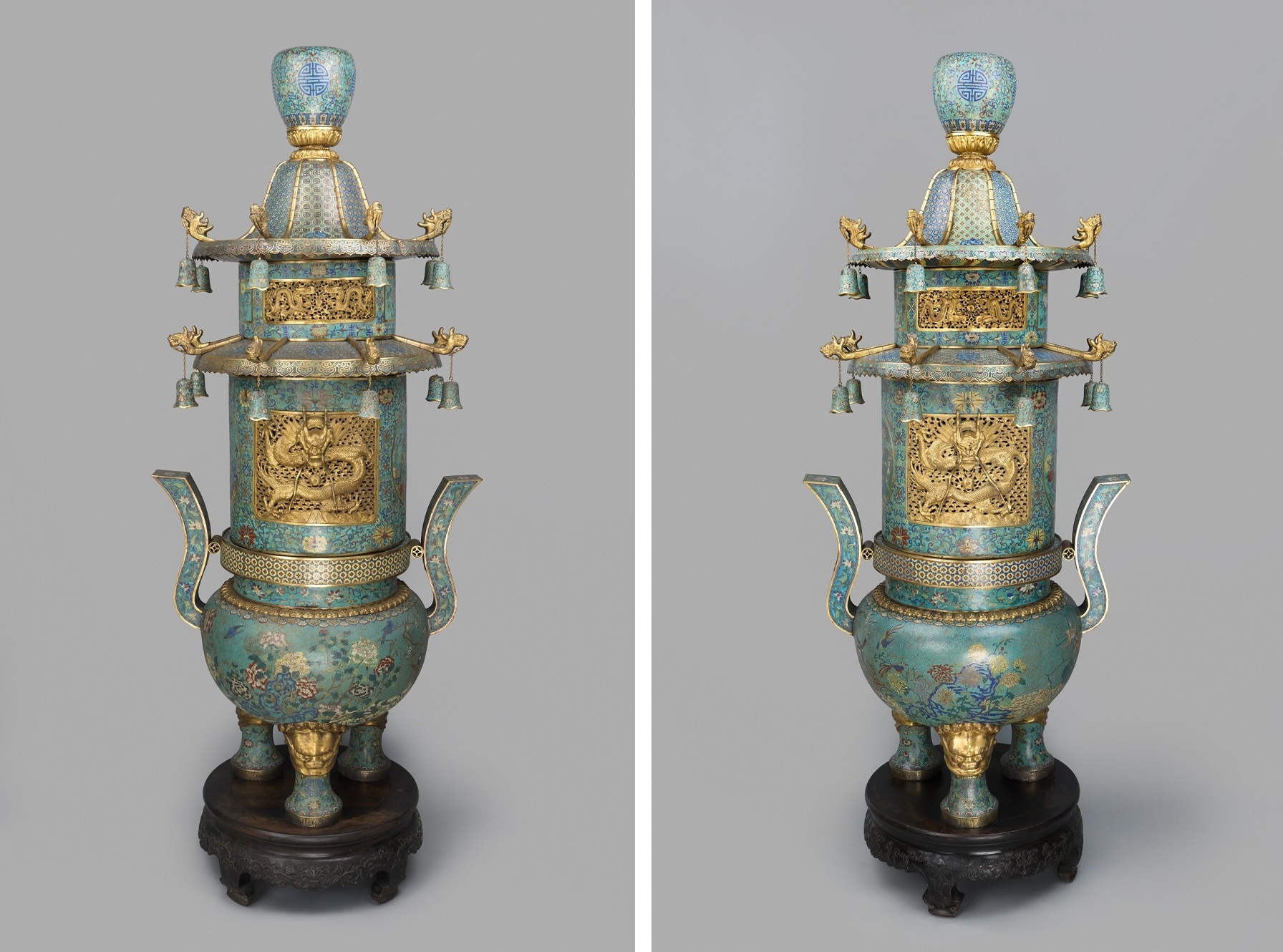
These two pagoda-shaped gilded Chinese censers were made in the 18th century, probably during the reign of Emperor Qianlong. They could be used both for religious purposes and in everyday life, for example, while studying music and calligraphy. Both censers belonged to representatives of an aristocratic family, as indicated by four claws on each paw of the dragons. Items depicting dragons with five claws on their paws were intended for the emperor himself.
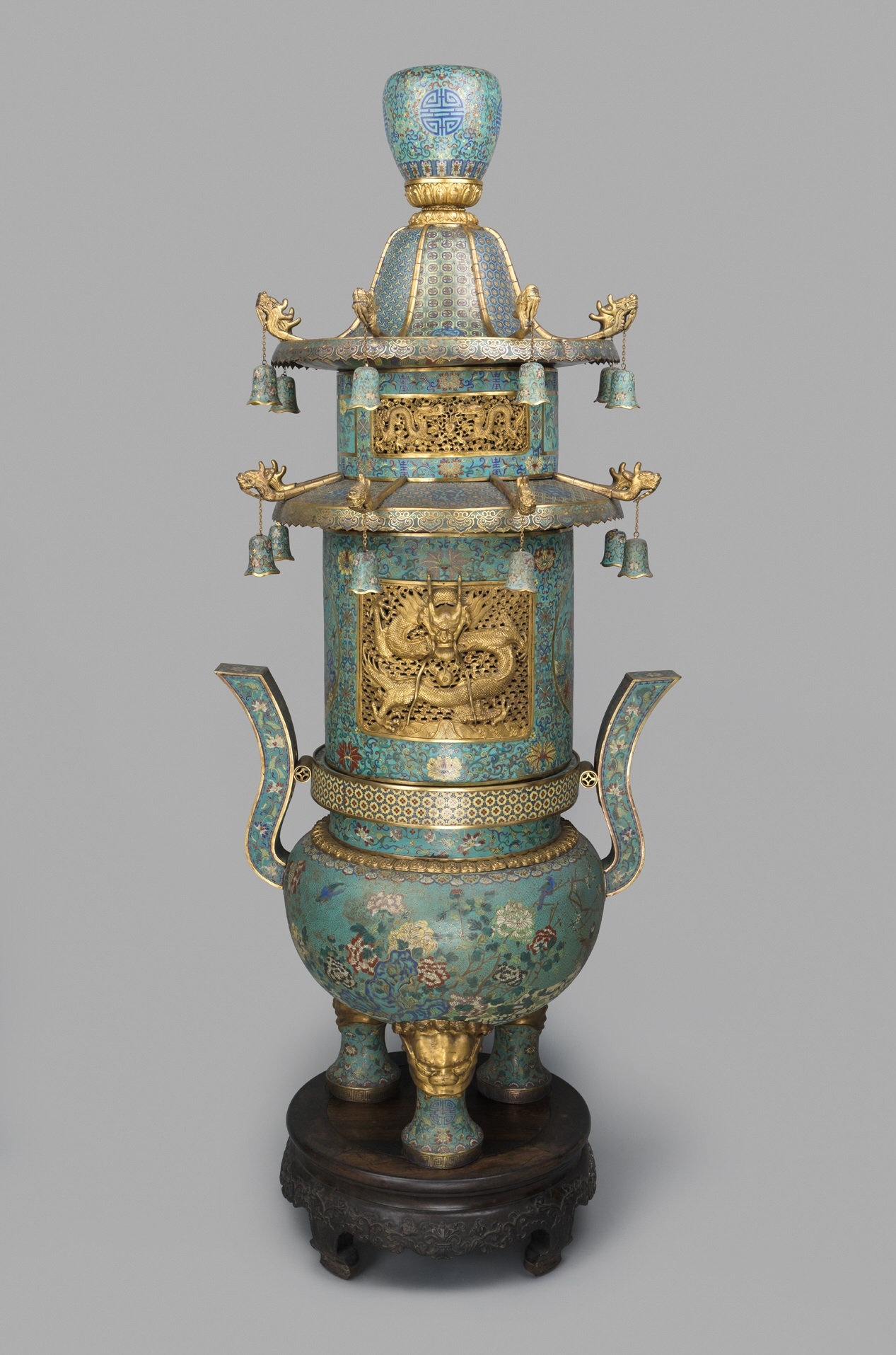
The height of both censers is 167 cm, the diameter is 50 cm. Similar bronze tripods of a larger size were used for ritual purposes: sacrificial grain and meat were cooked in them. One wooden stand is carved from sandalwood, known as zitan in China. This material was highly valued during the Ming and Qing periods, since sandalwood was extremely rare and grows very slowly. The wood was stored in the imperial warehouses and used in workshops at the court.
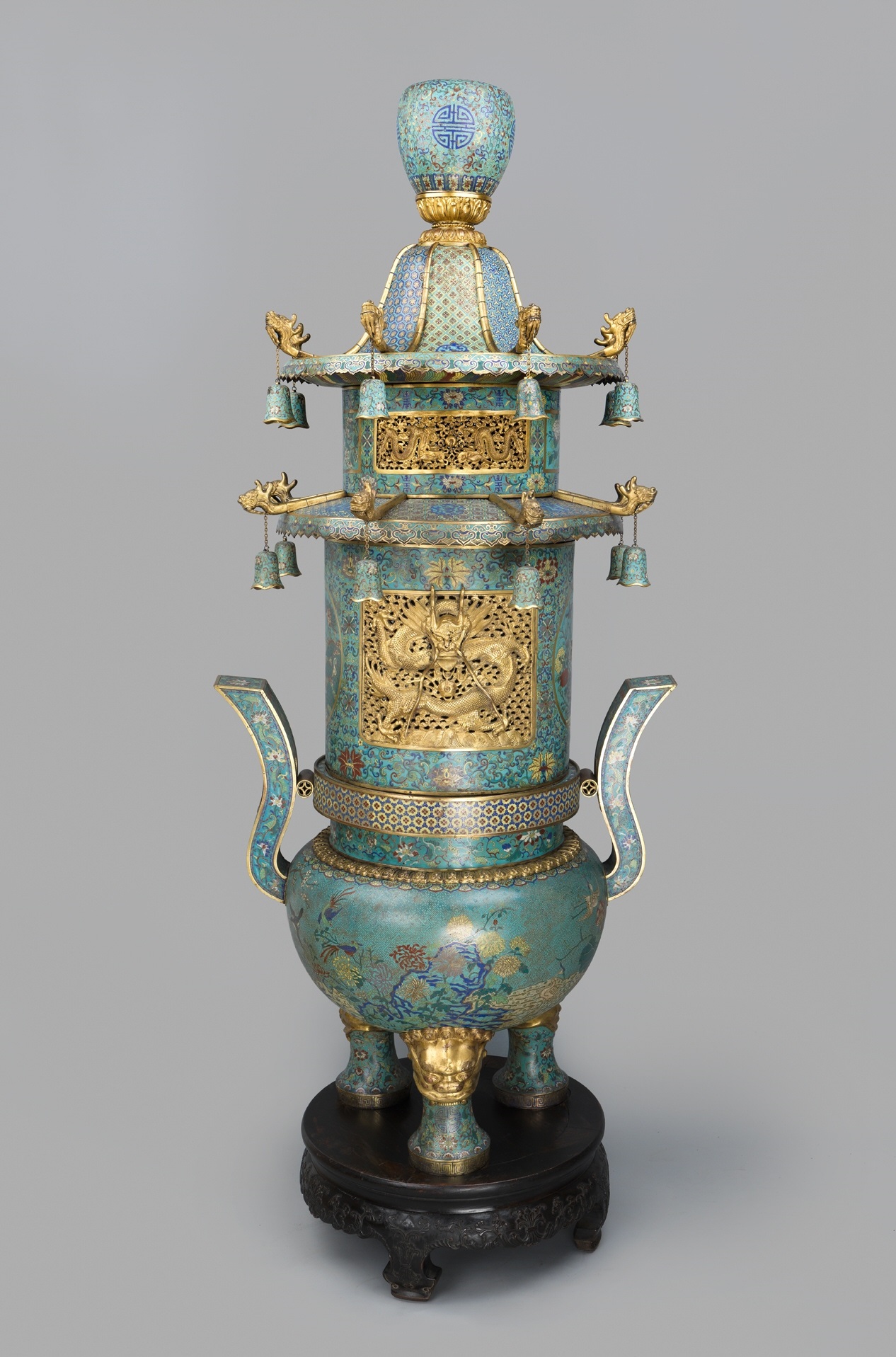
The exact origin of the beautiful couple is unknown. Both items were in the collection of Polish entrepreneur Rudolf Landstein, who founded Landstein & Company in Hong Kong. At some point, they ended up in the collection of Chinese art connoisseur Richard Wallace, who most likely purchased the incense burners from the Marquis of Hartford in 1870.
